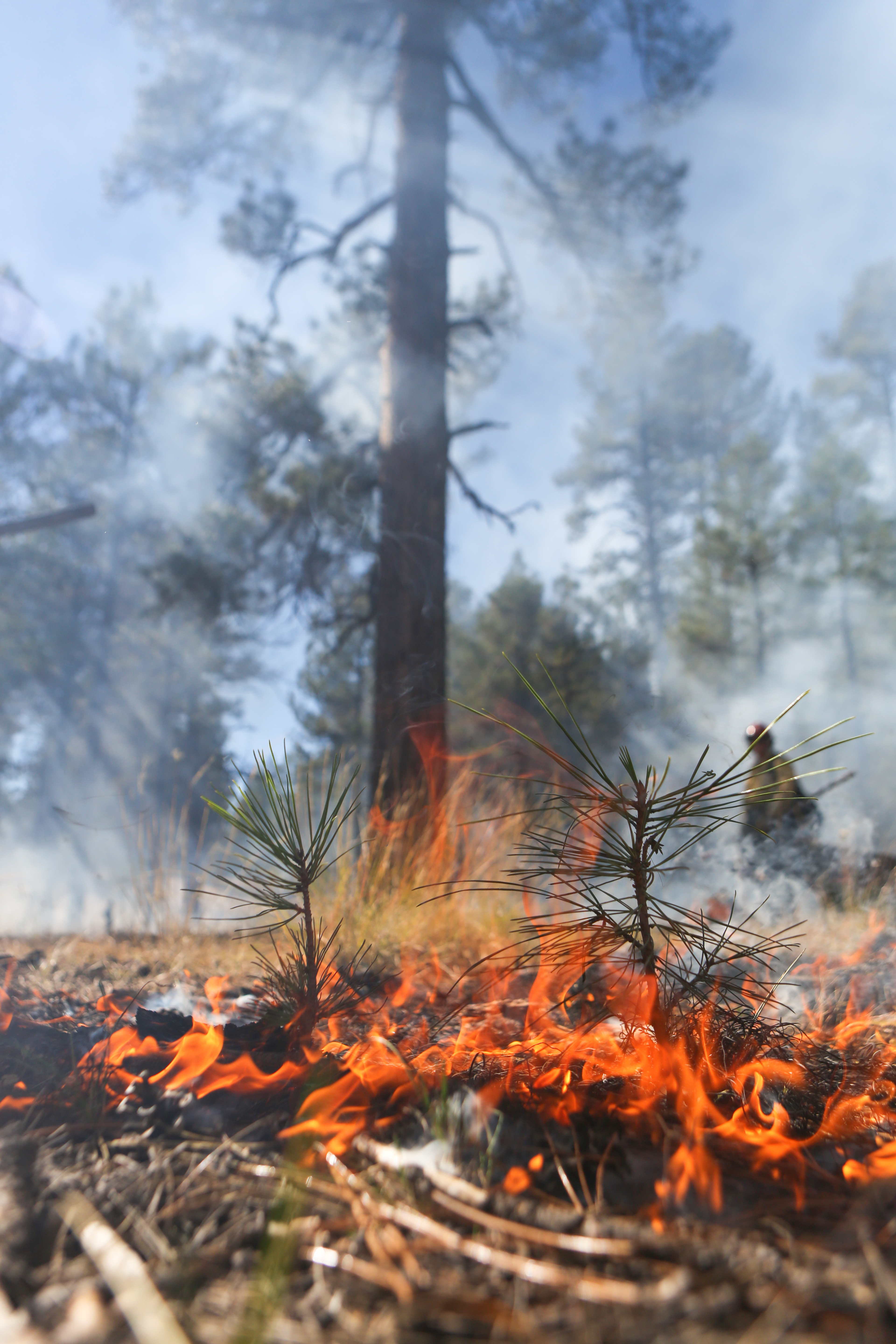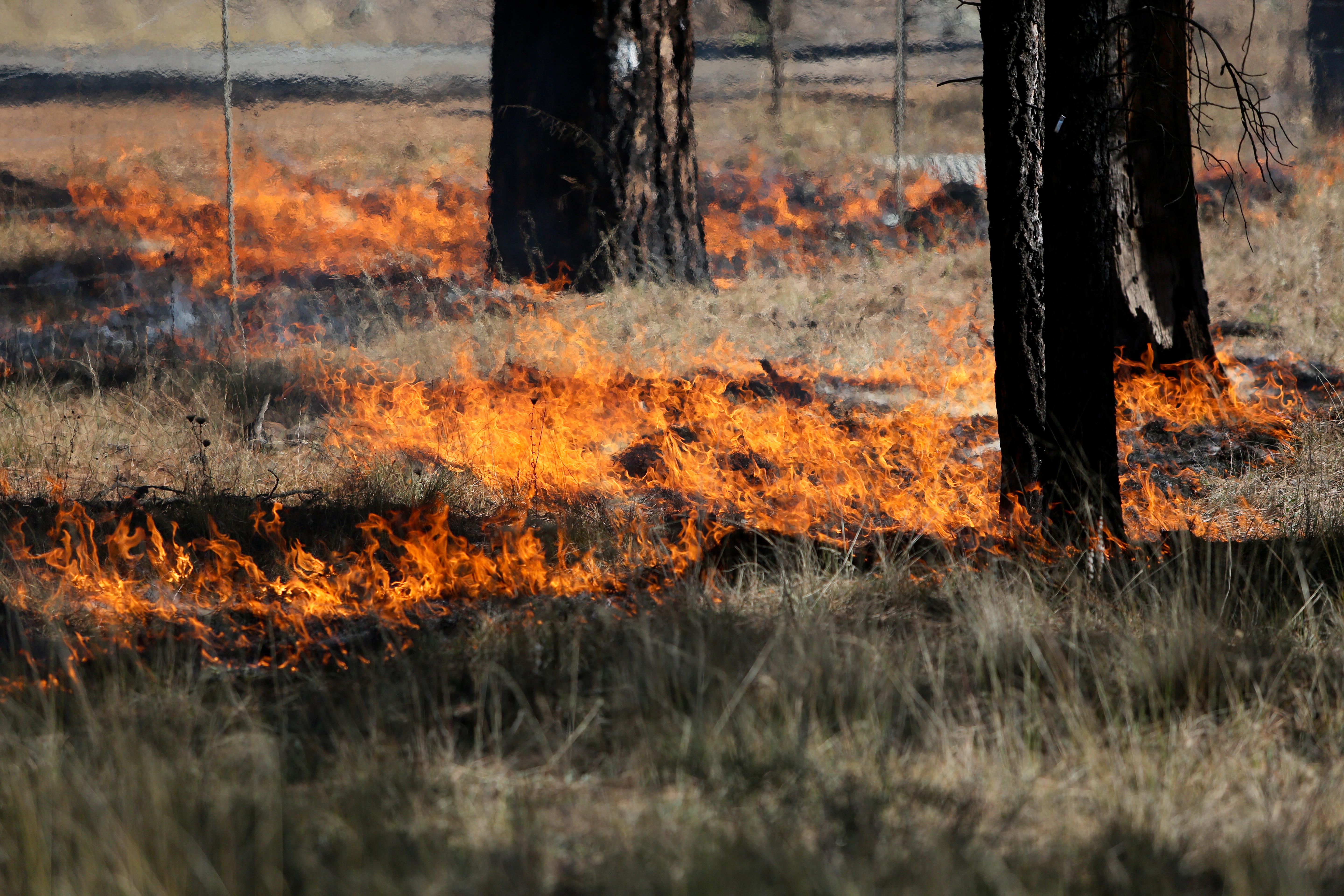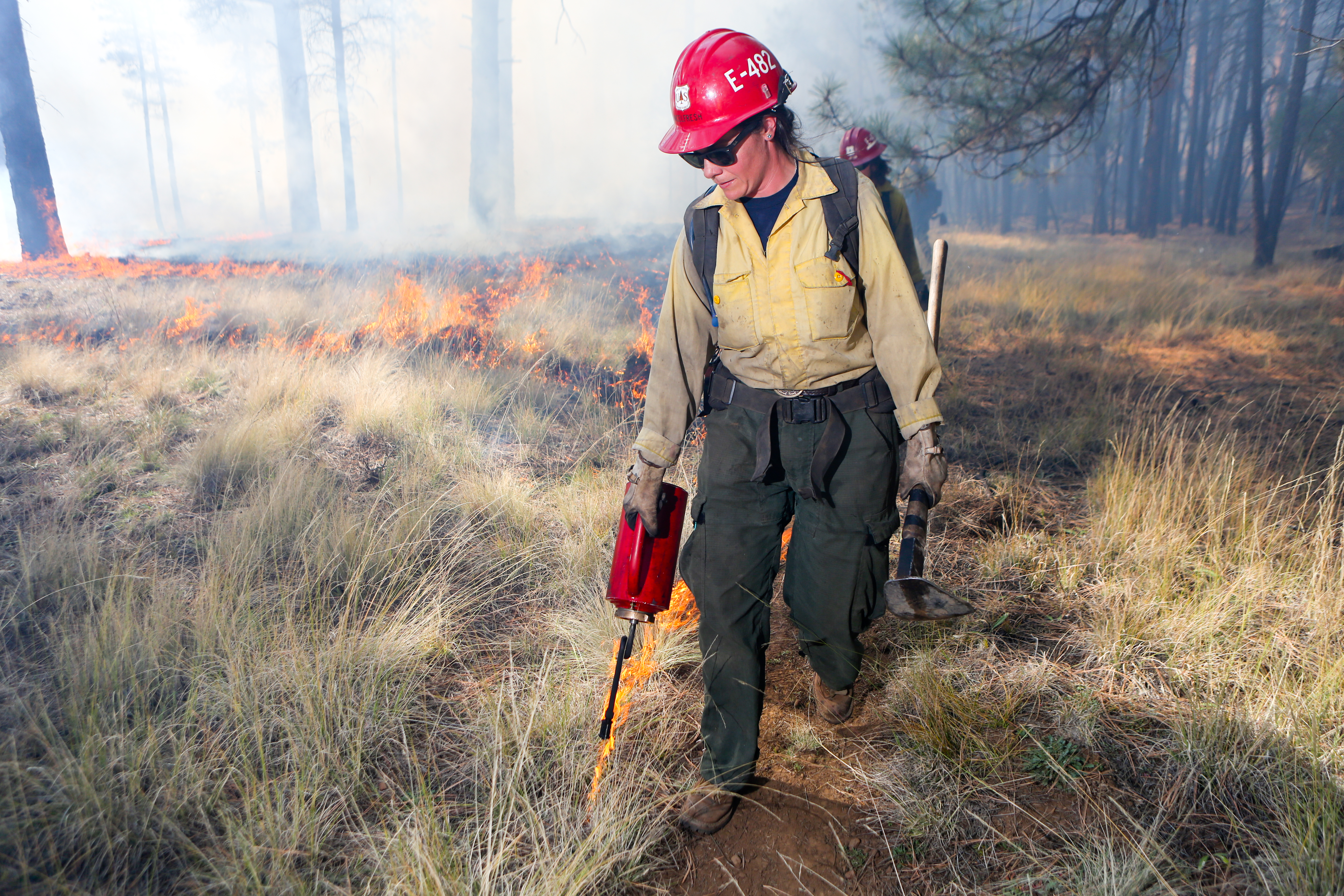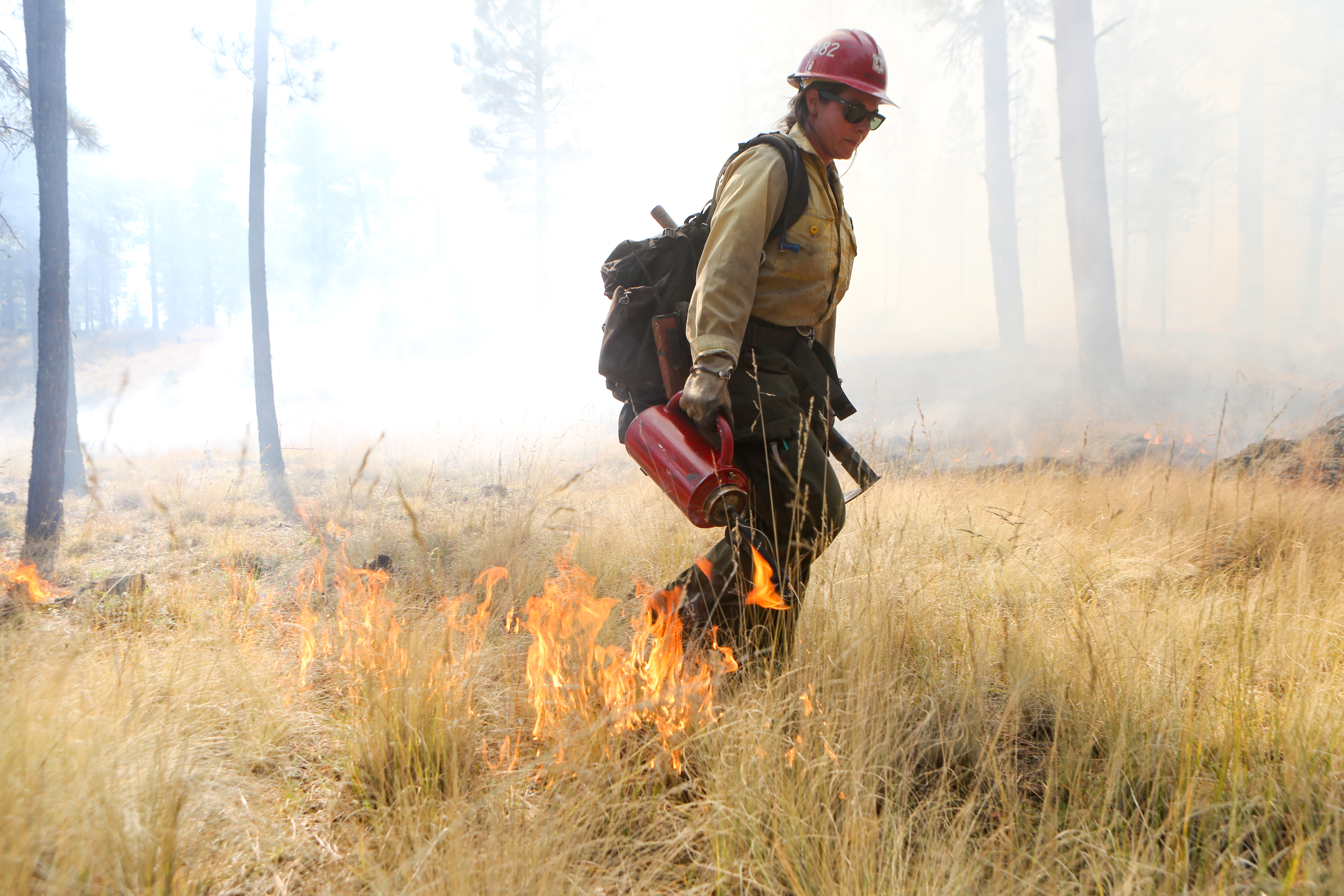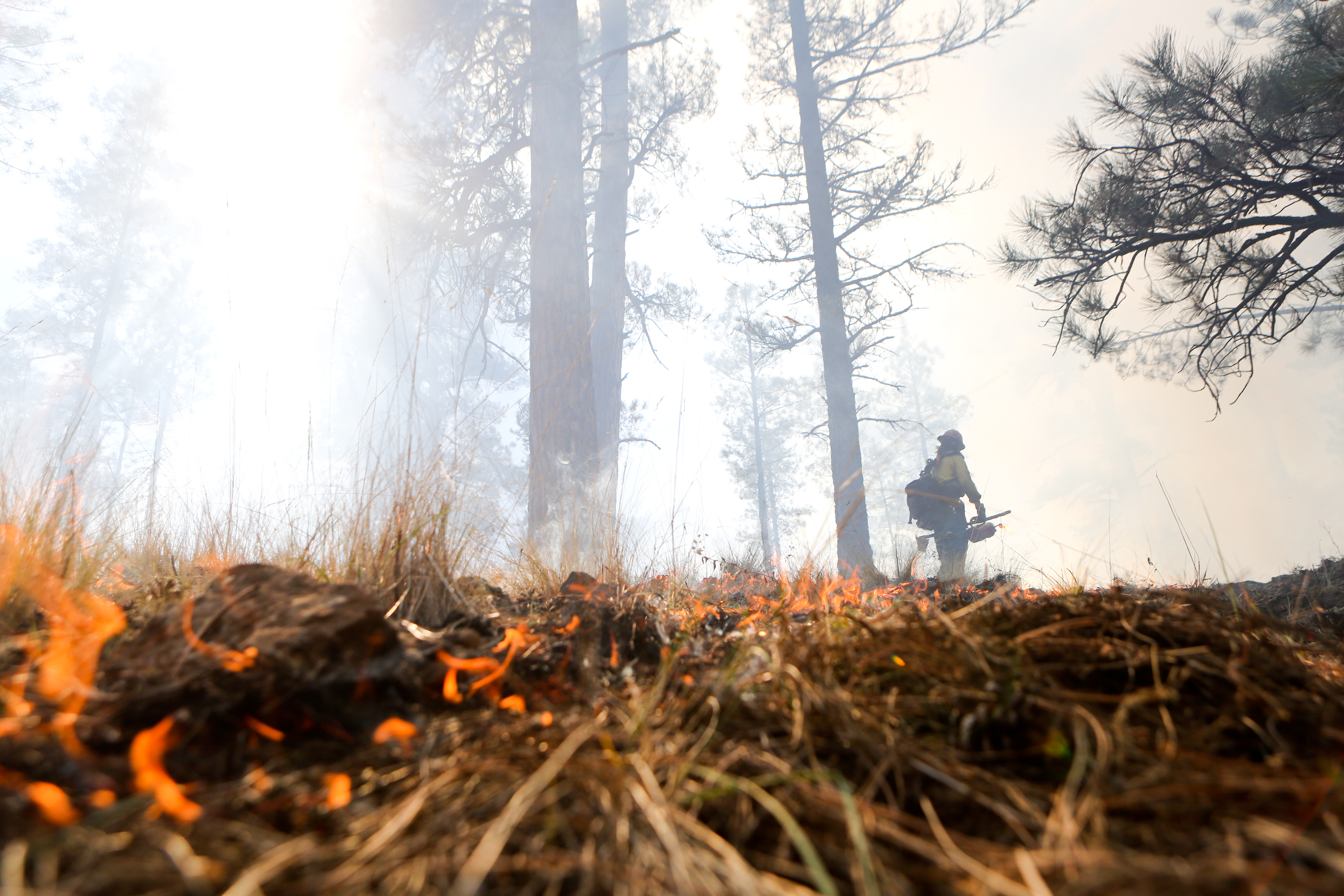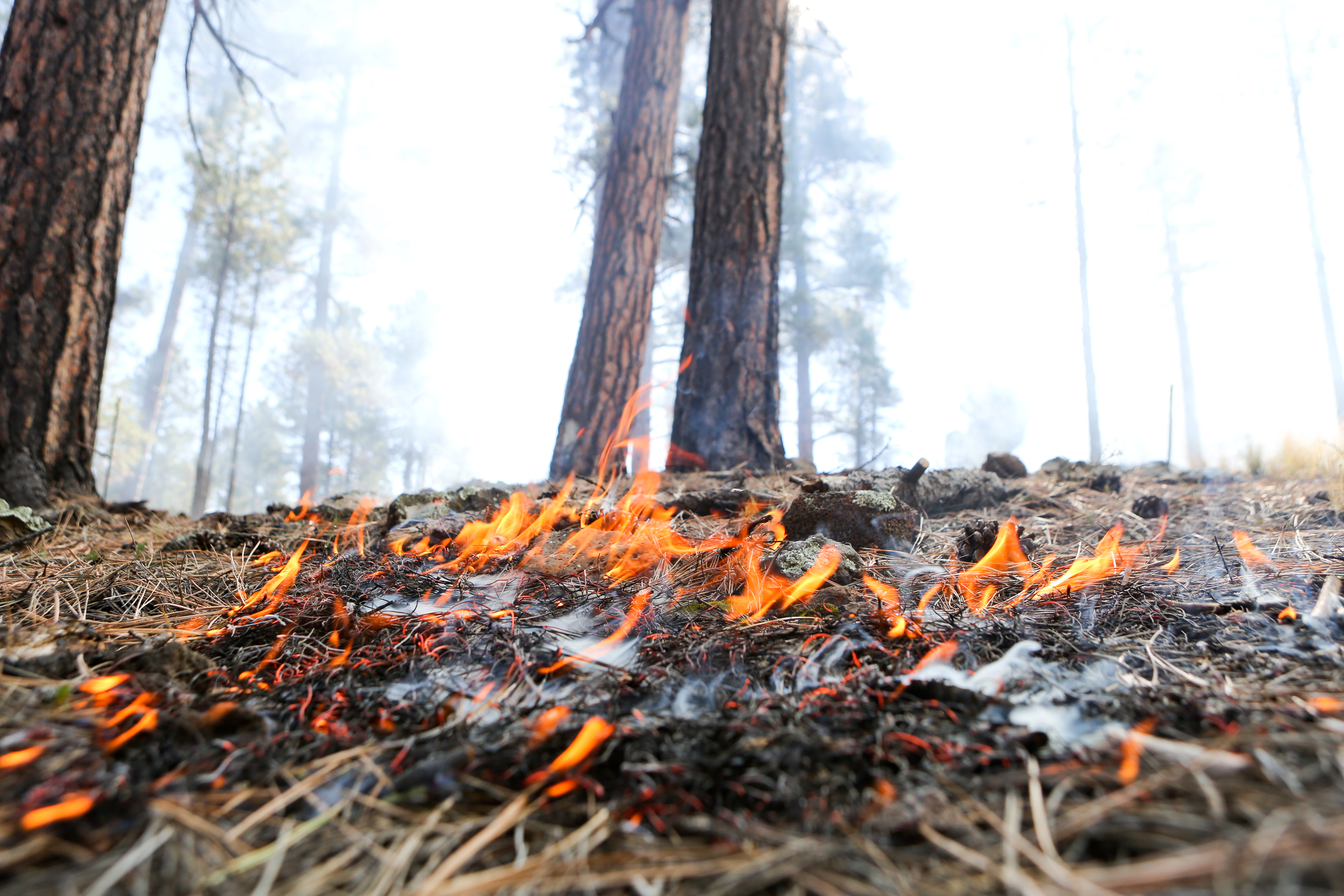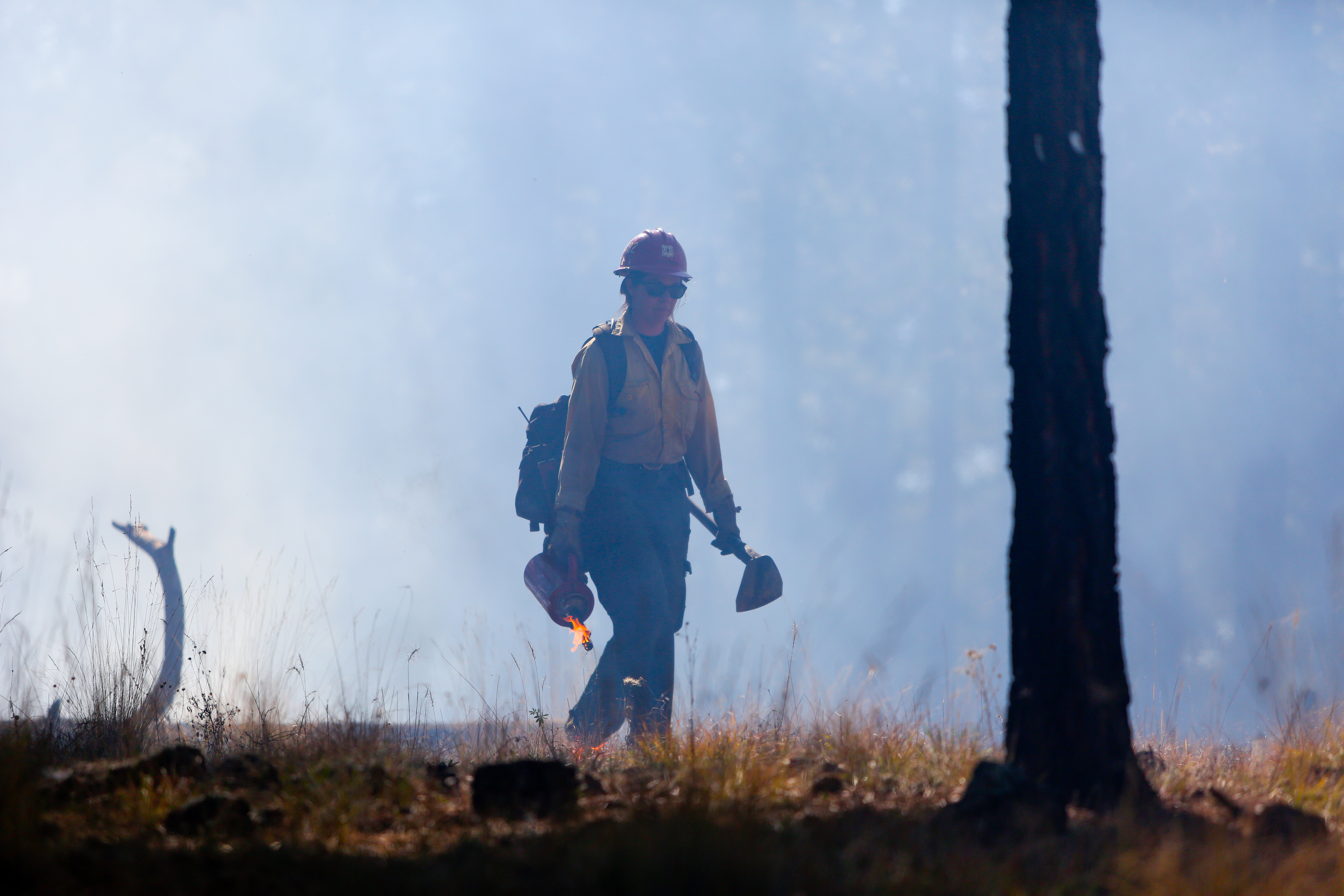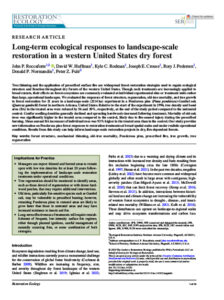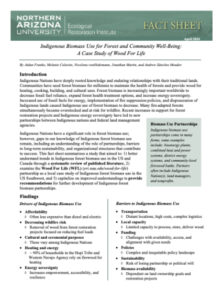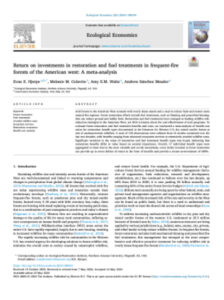Media
This page serves as a resource to access ERI’s multi-media archives,
including informative videos, news articles, and audio segments.
Audio Clips
ERI Podcasts
KNAU: 4FRI Part 4: What Restoration will Look and Smell Like. Part four of the four part series on the Four Forest Restoration Initiative. November 16, 2012 (4:01) 4FRI part 4
KNAU: 4FRI Part 3: A Collaboration of Unlikely Partners. Part three of the four part series on the Four Forest Restoration Initiative. November 15, 2012 (3:59) 4FRI part 3
KNAU: 4FRI Part 2: The Birth of a Collaboration. Part two of the four part series on the Four Forest Restoration Initiative. November 14, 2012 (4:09) 4FRI part 2
KNAU: 4FRI Part 1: The Problem with Our Ponderosa Forests. Part one of the four part series on the Four Forest Restoration Initiative. November 13, 2012 (3:42) 4FRI part 1
NPR: How The Smokey Bear Effect Led To Raging Wildfires. Part one of the Megafires: The New Normal in the Southwest series. August 23, 2012 (5:30)
NPR: Why Forest-Killing Megafires Are the New Normal. Part two of the Megafires: The New Normal in the Southwest series. August 23, 2012 (5:24)
NPR: In Southwest, Worst-Case Fire Scenario Plays Out. Part three of the Megafires: The New Normal in the Southwest series. August 24, 2012 (5:02)
NPR: Is It Too Late to Defuse the Danger of Megafires? Part four of the Megafires: The New Normal in the Southwest series. August 24, 2012 (8:55)
NPR: ‘Torture Lab’ Kills Trees to Learn How to Save Them. Part five of the Megafires: The New Normal in the Southwest series. August 26, 2012 (4:45)
NPR On Point, with Tom Ashbrook: Giant Wildfires. What we’re learning from the early, astonishing explosion of wildfires in the West in 2012, with guest Wally Covington. July 2, 2012 (46:35)
KNPR, New Mexico Fire: Harbinger for a Bad Fire Season. The Whitewater-Baldy Complex fire in New Mexico has now consumed more than 200,000 acres in and around the Gila National Forest. We get the latest update on the fire. Then we’ll talk about the upcoming fire season. What can we expect when the season starts early and drought conditions are getting worse? June 4, 2012 (17:03)
KNAU, Forest Service Expects to Spend Billions on ‘Mega Fires’. June 1, 2012 (1:23)
KJZZ, Managing Arizona Wildfires. Wally Covington, executive director of the Ecological Restoration Institute at NAU, explains why certain parts of Arizona are prone to wildfires and what can be done to minimize their damage. Covington says fire season usually isn’t anything to worry about if proper precautions are taken and control of the flames is maintained. Covington says fires act as self-regulating mechanisms for the environment, so the goal isn’t to stop fires entirely. He says it’s important to thin out fire-prone areas to keep flames from getting out of control. May 16, 2012 (10:40)
Inside Higher Education, Wildfires and Forest Restoration. In today’s Academic Minute, Northern Arizona University’s Wally Covington explores why the forests of the American West have become more susceptible to large fires and outlines efforts to restore their natural ecology. April 26, 2012 (2:30)
NPR, Managing Forests to Manage Wildfires, with Wally Covington, September 23, 2011 (0:30)
KNAU Inquiring Minds: Restoring Forests, with Wally Covington, June 21, 2011 (2:00)
NPR, All Things Considered, The Two Wildfires Ragining in Arizona Burn Differently, June 20, 2011 (3:40)
NPR, Major Wildfires Choke Arizona (Wallow Fire, Murphy Fire), with Wally Covingon, June 7, 2011 (3:36)
KJZZ Fire Prevention and Forest Health, with Dave Brewer, June 3, 2011 (1:10)
KNAU Fire Talk, call-in show with the ERI’s Wally Covington, the Forest Service’s Henry Provencio and Grand Canyon Trust’s Ethan Aumack, July 7, 2010. Part 1 (17:23)
KNAU Fire Talk, July 7, 2010. Part 2 (19:27)
KNAU Fire Talk, July 7, 2010. Part 3 (15:06)
Restoring Native Plant Diversity in Landscapes, with Professor Paul Keddy. This is a talk given in Flagstaff, Arizona to the School of Forestry on 18 April 2007 by Professor Paul Keddy as a William P. Thompson Memorial Lecture. It explains six basic models that can explain plant diversity in landscapes at different scales. The same models can be used to better manage landscapes to maintain plant diversity. The models include the intermediate diversity model developed by Phil Grime, and the centrifugal model developed by Paul Keddy. Most of the examples come from wetlands, but they can be applied to terrestrial vegetation as well. The general point is that plant diversity can be explained and manipulated with a small tool box of pragmatic models. April 18, 2007 (53:24)
Video Clips
-

ERI Video: Shifting paradigms in Forest Restoration (Long Version)
-

ERI Video: Shifting paradigms in Forest Restoration (60 Second Version)
-

Innovations in Forest Operations and Biomass Utilization in the Southwest - Panel 5
-

Innovations in Forest Operations and Biomass Utilization in the Southwest - Panel 4
-

Innovations in Forest Operations and Biomass Utilization in the Southwest - Panel 3
-

Innovations in Forest Operations and Biomass Utilization in the Southwest - Panel 2
-

Innovations in Forest Operations and Biomass Utilization in the Southwest - Panel 1
-

Innovations in Forest Operations and Biomass Utilization in the Southwest - Welcome and Keynotes
-

Innovations in Forest Operations and Biomass Utilization in the Southwest - Panel 6
-

Session4 - Introduction to Lumber Dry Kiln Operations
-

Session 3 - Introduction to Lumber Dry Kiln Operations
-

Session 2 - Introduction to Lumber Dry Kiln Operations
Press Kit
In the past two decades, communities in fire-prone forests across the West have faced the increased danger of catastrophic wildfires. These wildfires have been steadily growing in size and intensity partly due excess ground fuels from a century of fire suppression and driven by rising temperatures and drought from climate change. These intense wildfires torch homes and infrastructure as well as important natural resources like watersheds and wildlife habitat.
This press kit was designed to provide important information about the ERI, the critical, timely issues involving our nation’s forests, and the science behind ecological restoration.
For additional information or to speak with one of our expert forest ecologists, please contact Tayloe Dubay at Tayloe.Dubay@nau.edu or (928) 523-5088.
FAQs
Restoring Ponderosa Pine Forests of Intermountain West: An Overview and FAQ
Press Gallery
Download photo captions.
Long-term ecological responses to landscape-scale restoration in a western United States dry forest
Tree thinning and prescribed surface fire are common forest restoration strategies in the dry forests of the western United States. These treatments are often assessed at small scales rather than across large areas. This study evaluated forest structure, regeneration, old-tree mortality, and tree growth over 21 years in a large (2114 ha) Ponderosa pine-Gambel oak forest in northern Arizona. By the end of the study, tree density and basal area in the treated area were reduced by 56% and 38%, respectively, compared to the untreated control. Conifer seedling densities generally declined while hardwood sprouting increased post-treatment. Old oak tree mortality was higher in the treated area, likely due to fire injury. The mean annual basal area increment of individual trees was 93% higher in the treated area than in the control. These findings offer valuable insights for large-scale restoration efforts in dry, fire-dependent forests.
Return on investments in restoration and fuel treatments in frequent-fire forests of the American west: A meta-analysis
Arid forests in the American West are overly dense and need fuel reduction and fire regime restoration. Forest restoration efforts, such as thinning and prescribed burning, aim to reduce wildfire risks. Despite their importance, the cost-effectiveness of these programs is not well understood. This study conducted a meta-analysis of 120 observations from 16 studies over the past two decades to evaluate the benefits and costs of forest restoration and fuel treatments. Results showed significant variation in benefits, from enhanced ecosystem services to avoided wildfire costs. In high-value, at-risk watersheds, every dollar invested in restoration yielded up to seven dollars in benefits, achieving a 600% return on investment.

